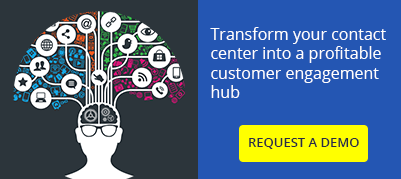In a world that is dictated by breakneck internet and uber-fast smartphones, proactive behaviour is the word of the year, rather than conformist reactive actions.
These days, people have an unfathomable craving to get things done fast, and I don’t at all mean ‘swift’. The yearning is to do something before anything concrete happens.
Wait, isn’t that somewhat inane?
No, it is not. What this really means is that we are in a space where predicting trends and patterns has become the order of the day across industries. Contact centers too have come into deep contact with this phenomenon. As a result, predictive analytics have started to play a mammoth role in the industry.
What is Predictive Analytics?
To break the terminology in simple terms, predictive analytics is a branch of advanced analytics that is used to make predictions about the future. It employs a host of systems such as statistics, data mining, data modeling, machine learning, big data, and artificial intelligence.
Thereafter, the patterns and trends that are identified in the historical and transactional data can be easily applied to spot risks and opportunities for the future. So, this holds immense significance for businesses that want to know about future threats and prospects.
The application of predictive analytics expands diverse industries and verticals like healthcare, insurance, risk management, fraud detection, profit enhancement, and others, However, Customer relationship management (CRM) probably is the clear winner in the contemporary use of predictive analytics. It can be put to the use in the entire customer lifecycle – from customer acquisition to retention and winning them back, in case they are planning to attrite.
However, the use of predictive analytics to better customer experience hasn’t been fully realised yet and a lot remains to be achieved, as petabytes of invaluable customer data goes unscrutinized.
Why Predictive Analytics is a Force to reckon with?
The customer engagement hubs of the future has to pick up agility in order to swiftly adapt to changing customers’ expectations, as a great number of mediums of interactions are being used at present times. Predictive analytics will play a most important role as contact centers’ evolve to accommodate the changes in customer behaviour.
1. Pay Tight Attention to Customer Dissatisfaction
Almost all interactions of customers with contact centers can be looked into to unravel important signs about dissatisfaction. However, brands have thus far not fully leveraged these interactions to the betterment of customer experience. With the use of analytics, a satisfied customer can be surely distinguished from an unsatisfied one – based on number of calls, expressions, mention of competitors, alternative price plan enquires, and other issues relating to customer experience. Thereafter, different approaches can be taken for dissimilar customers to resolve issues, offer customized plans, or other added incentives.
2. Improve Customer Retention
Once various approaches are identified for customers using predictive analytics, contact centers can automatically route calls to experienced contact center agents, and thereby increase customer experience. This process takes place before customers decides to move business from your brand to another.
3. Identify Customer Sentiment
There are high chances that your customers will leave traces of satisfaction or dissatisfaction on multiple mediums of communications. These include social media, app reviews, forums, etc. With the use of predictive analytics and sentiment analysis, contact centers can identify whether the customer is propagating a positive or negative sentiment across platforms. Thereafter, you can address the customer in a way to pacify and ultimately alleviate the concerns, to increase customer satisfaction.
4. Anticipate Significant Directions in Customer Lifecycle
Any changes in customer lifecycle can be predicted quite precisely with analytics. After identifying the alteration in customer behaviour, predictive analytics can help anticipate when a customer would need agent support by taking a look at their browsing activity on your website, call up valuable prospects before they decide to pick up the phone and give your contact center a call, and moreover predict the number of customers can call based their online behaviour.
5. Enhance Customer Experience
With the aforementioned benefits, customer churn scores head south. Furthermore, a variety of contact center KPIs such as CSAT scores and FCR also increase. This also results in better coordination with other business vertical of your brand, thereby improving the entire customer experience across all touch points.


